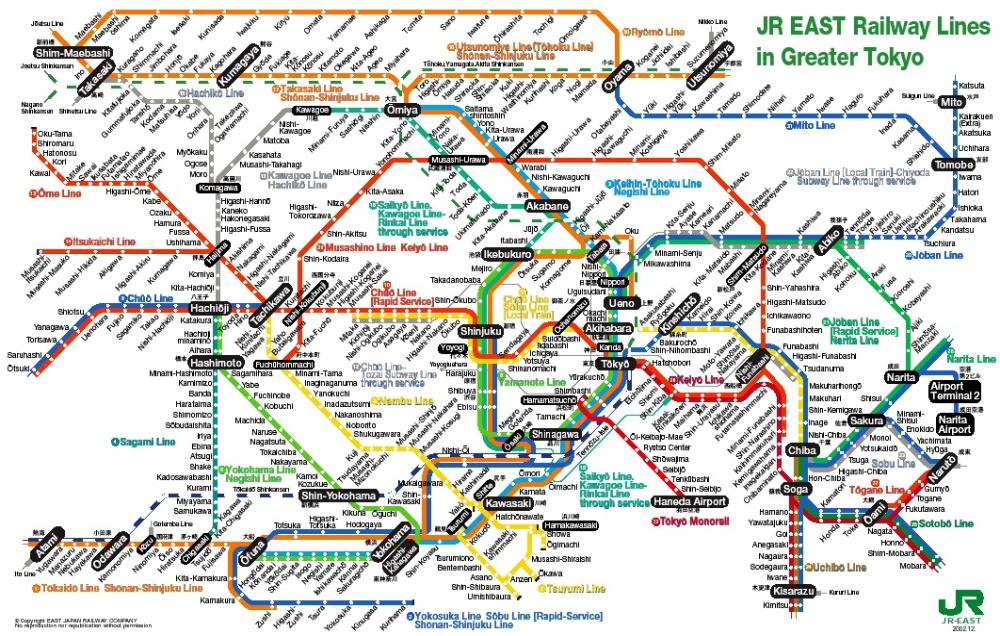
Where We Be
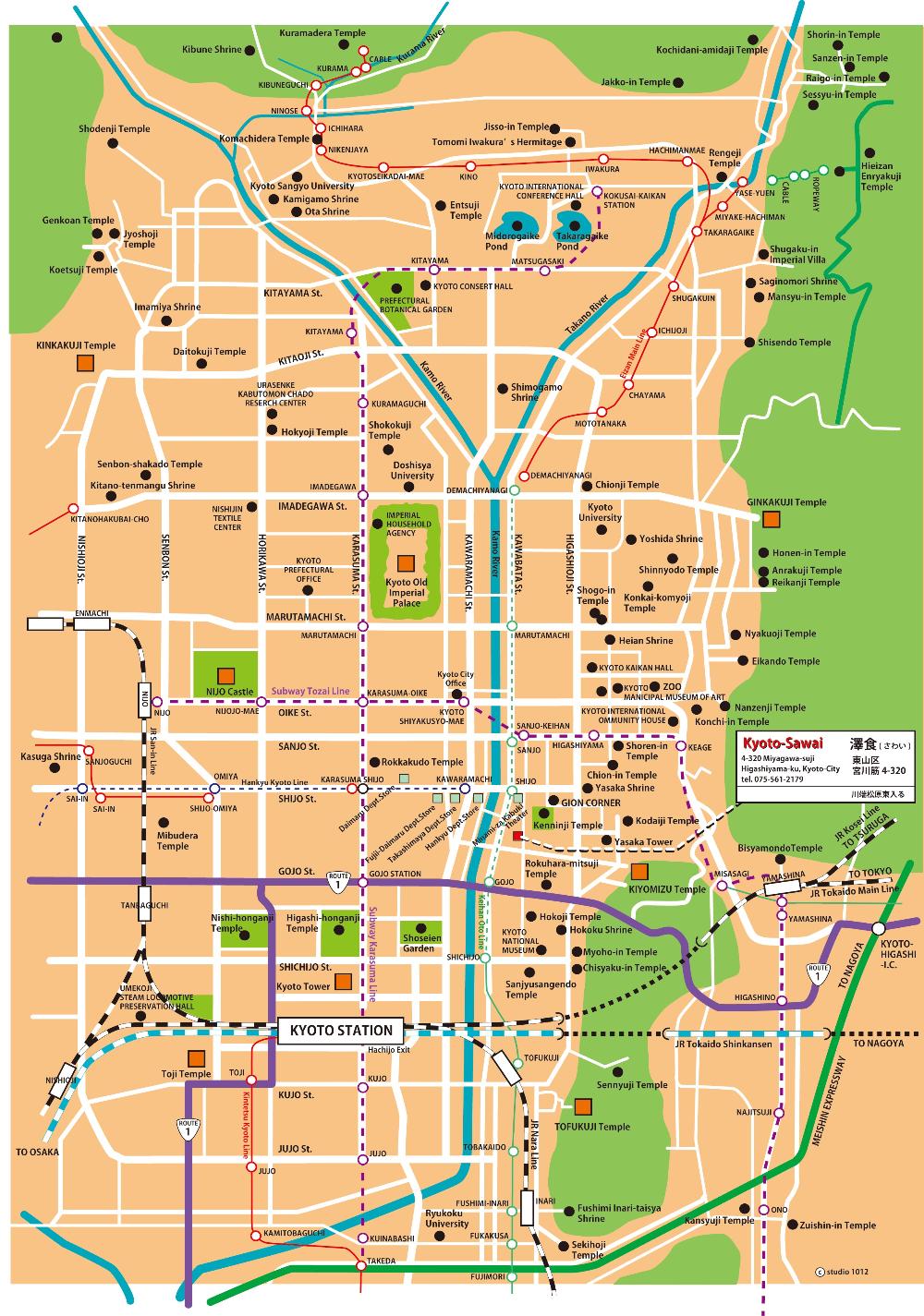
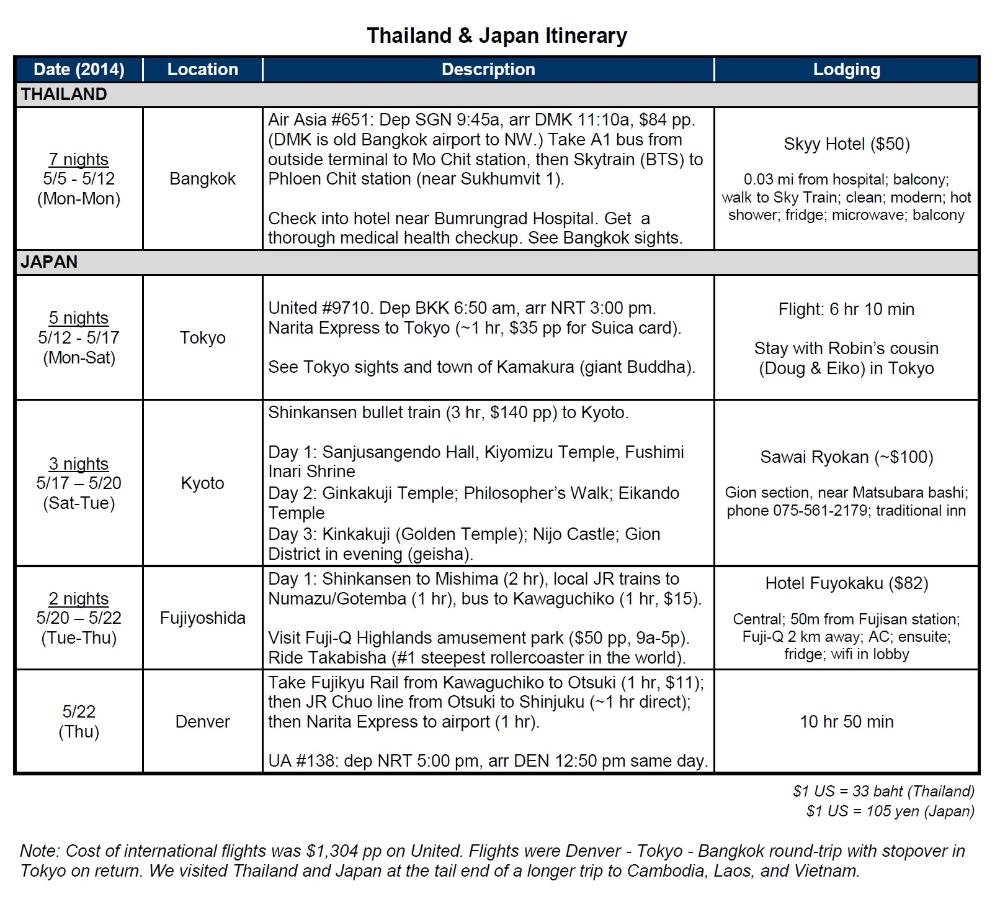
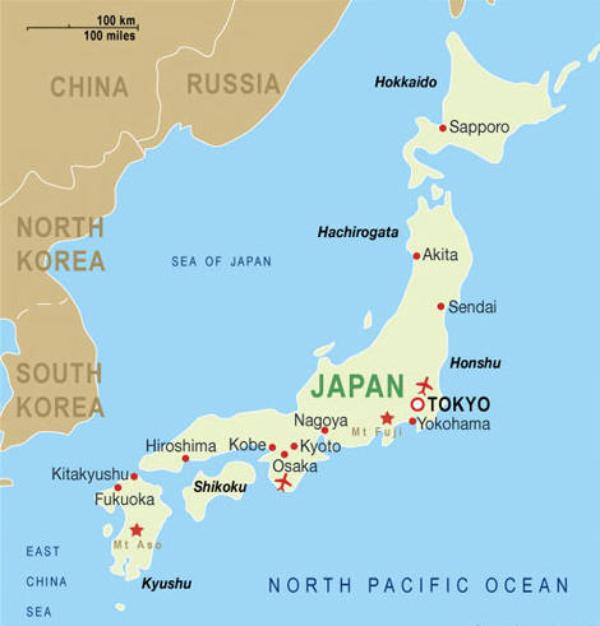
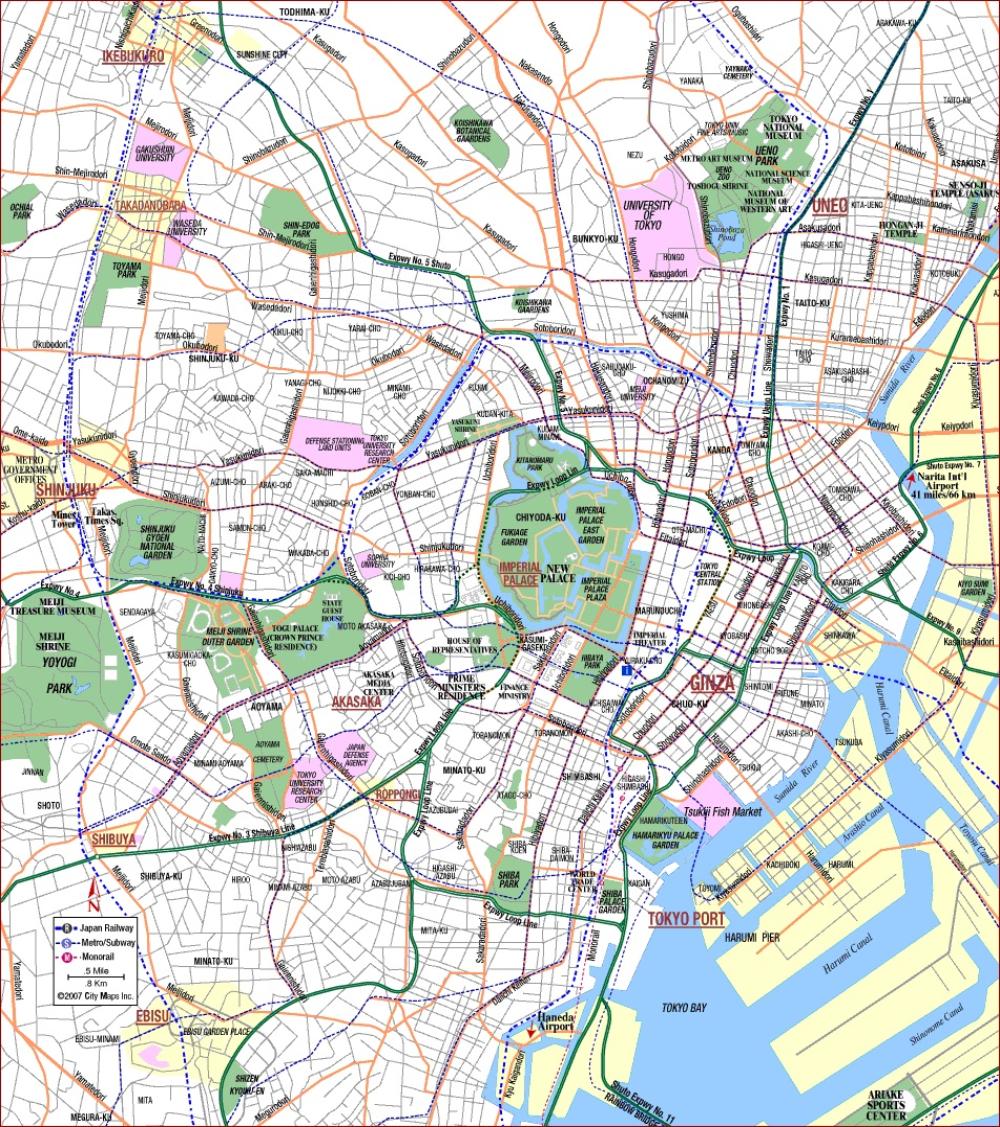
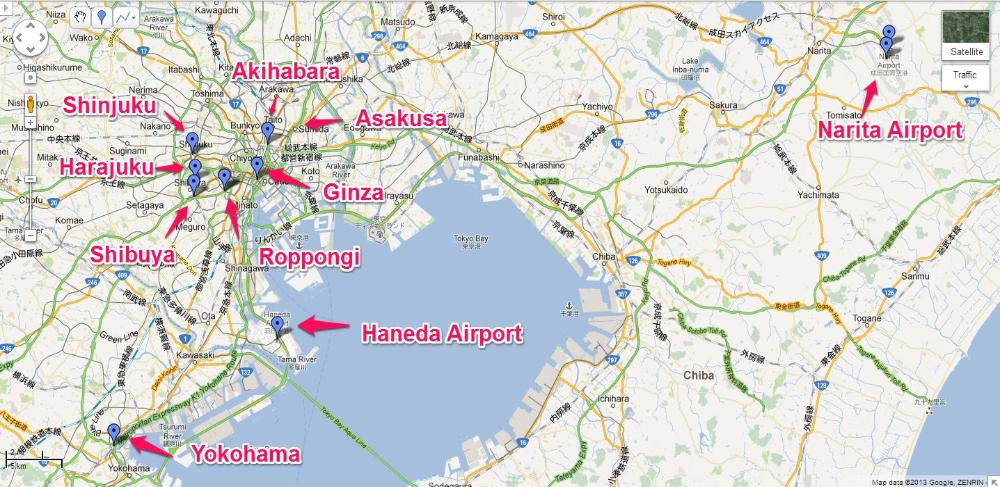
| This top-level Tokyo map shows where Narita Airport is (the main international airport) and the names and locations of some of the main districts in Tokyo. We stayed with Robin's cousin in Ota, just to the west of Haneda Airport (domestic flights). We commuted by convenient rail lines into the city center. |
| DETAILED MAPS -- TOKYO |
| JAPAN MAP |
| This detailed map of Tokyo's city center shows most of the main tourist sites. Near Tokyo Port is Hamarikyu Gardens and Tsukiji Fish Market. The Imperial Palace site occupies the huge green space near the center of the map. To the west is Shinjuku -- site of Gyoen Garden, Meiji Jingu Shrine, and Tokyo Metropolitan Government Office. Harejuku and Shibuya Crossing are south of here. Asakusa is nearly off the map to the northeast. |
| A good rail map is a must-have in Tokyo. Click on the map above for a higher-resolution PDF. The Yamanote Line is particularly useful since it circles the central part of Tokyo. It took us some time to realize there are additional subway lines BELOW the rail lines that make even more stops. |
| For this 10-day trip to Japan we focused on just three key sites: Tokyo, Kyoto, and Mt. Fuji. Mt. Fuji is to the southwest of Tokyo, and Kyoto is further southwest from there. |
| TOKYO CITY CENTER |
| TOKYO -- RAILWAY LINES MAP |
| JAPAN ITINERARY |
| JAPAN TIPS |
Key Phrases: konichiwa = hello; arigato = thank you.
Transport: Purchase a Suica card when you first arrive in Tokyo
(minimum $10). It allows you to take the trains and subways all around
Tokyo and can be recharged. Ask for help the first time if needed.
Note that there are two transport systems in Tokyo -- a rail system and a
lower-level subway system. Both are useful depending on where you want
to go -- but we relied primarily on the rail system.
If you want to get a Japan Rail Pass for extensive travel around Japan, be
sure to do it while still in the U.S. You cannot buy it once you are in Japan.
An all-day bus pass ($5 pp) is very useful in Kyoto. Distances between
temples are far and the subway system doesn't reach all of them. With a
bus pass you can hop on and off as much as you want. Board the bus
from the back, then, when it's time to get off, head to the front and pay or
show your pass. (There's a change machine on the bus if needed.)
Transport: Purchase a Suica card when you first arrive in Tokyo
(minimum $10). It allows you to take the trains and subways all around
Tokyo and can be recharged. Ask for help the first time if needed.
Note that there are two transport systems in Tokyo -- a rail system and a
lower-level subway system. Both are useful depending on where you want
to go -- but we relied primarily on the rail system.
If you want to get a Japan Rail Pass for extensive travel around Japan, be
sure to do it while still in the U.S. You cannot buy it once you are in Japan.
An all-day bus pass ($5 pp) is very useful in Kyoto. Distances between
temples are far and the subway system doesn't reach all of them. With a
bus pass you can hop on and off as much as you want. Board the bus
from the back, then, when it's time to get off, head to the front and pay or
show your pass. (There's a change machine on the bus if needed.)
Best Time to Go: May is very pleasant, but if you want plum blossoms you
need to go around February, and for cherry blossoms around March. Fall
also looks to be spectacular. We'd love to see Japan in each of these
seasons because the temples and parks look different in each season.
Lodging: We liked the central location of the New Miyako Hotel in Kyoto.
Something near Kyoto Station is helpful since most buses stop here as well
as trains. The tourist information office at Kyoto Station was very helpful in
arranging lodgings. (We have no advice on Tokyo lodgings since we
stayed with Robin's cousin.)
Other Tips: Many signs are in Japanese only, so you may have to ask for
help more than usual. We needed help with getting our first Suica pass, for
instance, as well as getting tickets for our ride at Fuji-Q Park. Not everyone
speaks English, but those who do tend to be polite and helpful. Even those
who don't may be able to help you based on pantomiming your need. Most
of the Japanese we met seemed pleased we were visiting their country and
went out of their way to make our experience a success.
need to go around February, and for cherry blossoms around March. Fall
also looks to be spectacular. We'd love to see Japan in each of these
seasons because the temples and parks look different in each season.
Lodging: We liked the central location of the New Miyako Hotel in Kyoto.
Something near Kyoto Station is helpful since most buses stop here as well
as trains. The tourist information office at Kyoto Station was very helpful in
arranging lodgings. (We have no advice on Tokyo lodgings since we
stayed with Robin's cousin.)
Other Tips: Many signs are in Japanese only, so you may have to ask for
help more than usual. We needed help with getting our first Suica pass, for
instance, as well as getting tickets for our ride at Fuji-Q Park. Not everyone
speaks English, but those who do tend to be polite and helpful. Even those
who don't may be able to help you based on pantomiming your need. Most
of the Japanese we met seemed pleased we were visiting their country and
went out of their way to make our experience a success.
| KYOTO MAP |
| Kyoto is bigger than we expected, and the number of temples can be overwhelming. Pick your favorites based on prior research (e.g., on TripAdvisor). Getting an all-day bus pass makes sense here, as walking between temples often isn't realistic. Kyoto Station is a good starting point. Directly northeast is Gion District (think geisha). On Day 1 we saw Sanjusangendo, Kiyomizu, and Fushimi Inari Temples -- all more or less east of Kyoto Station. On Day 2 we saw Ginkakuki Temple then walked along the Philosopher’s Walk to Eikando Temple -- all northeast of Kyoto Station. On Day 3 we visited Nijo Castle and Kinkakuji (Golden) Pavilion -- both to the northwest of Kyoto Station. |
Courtesy of WordTravels.com
